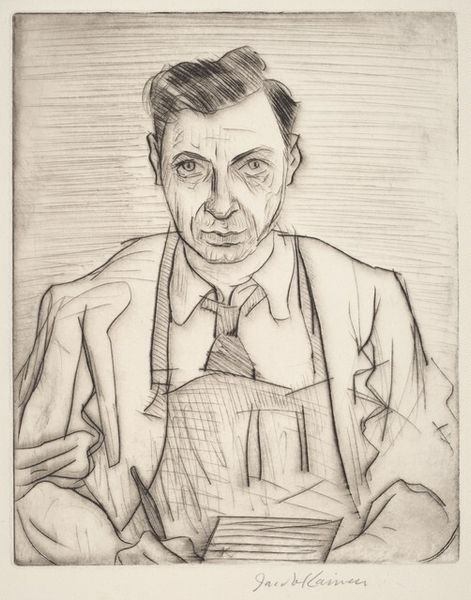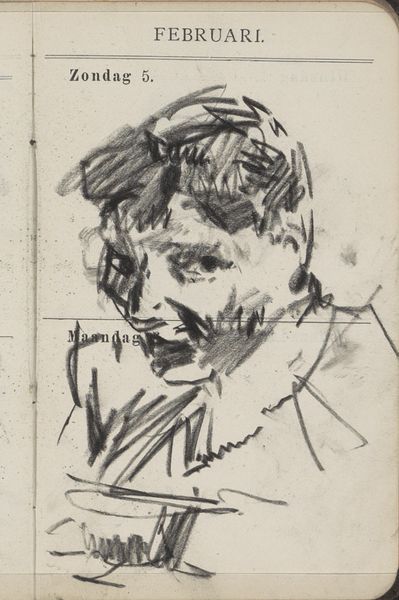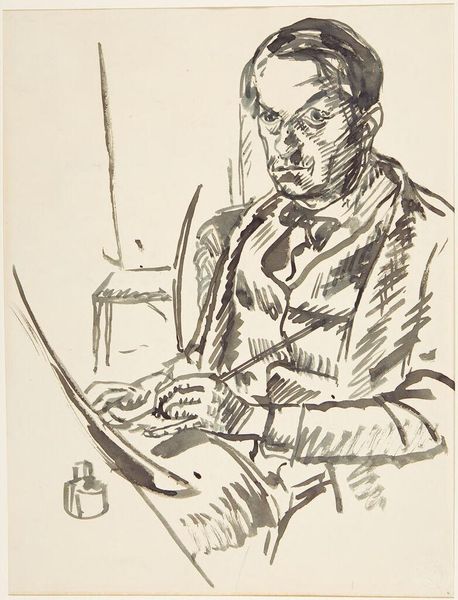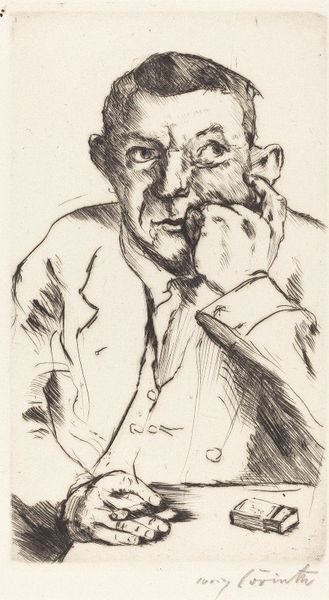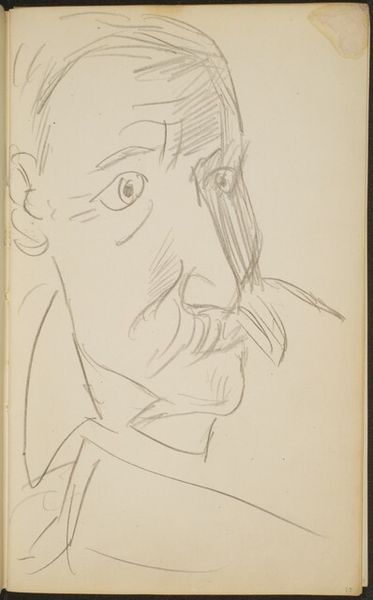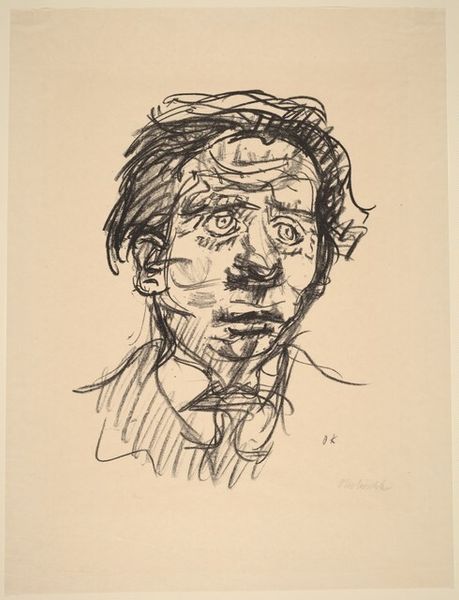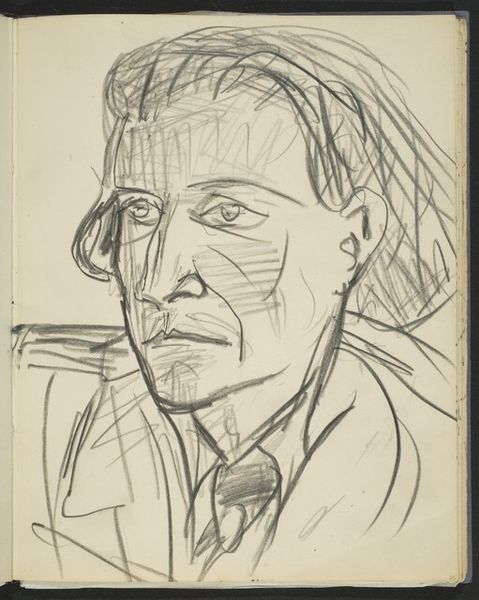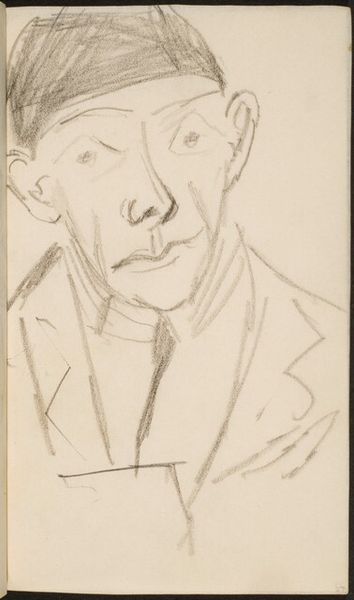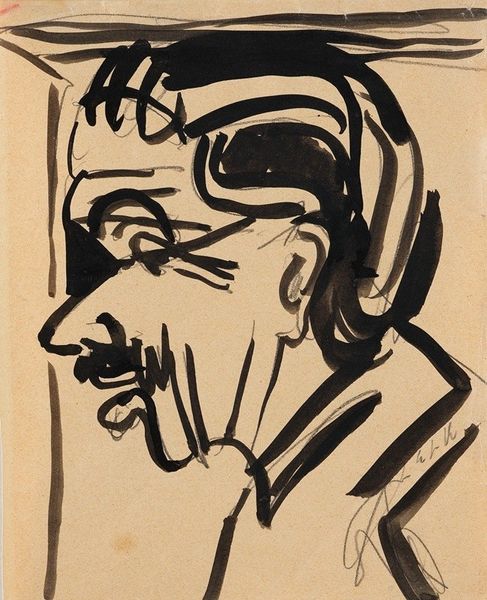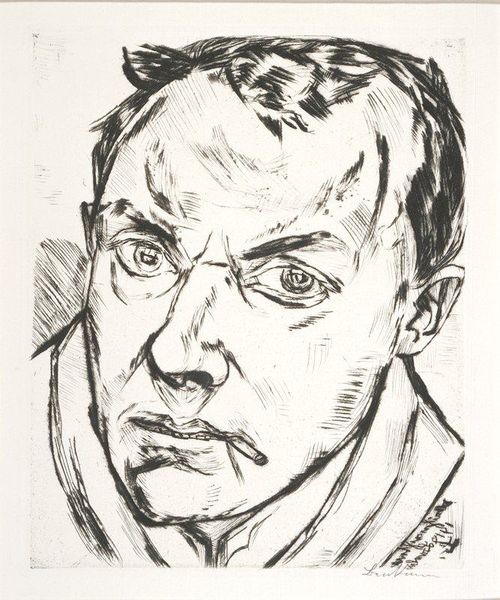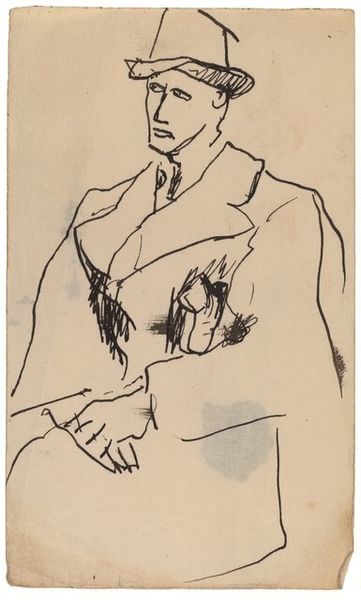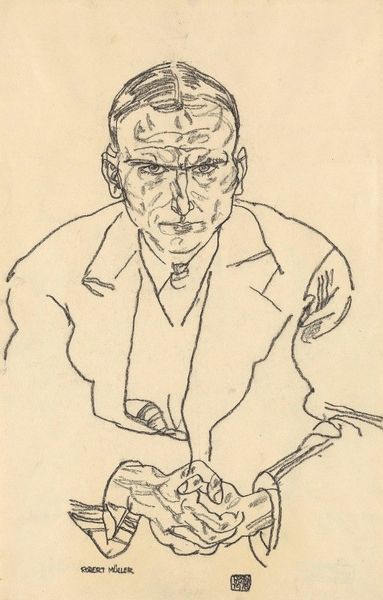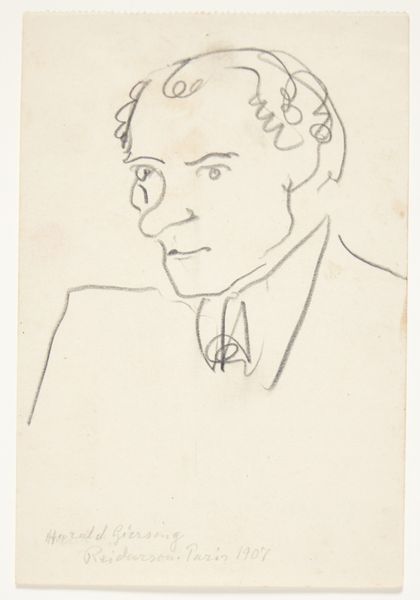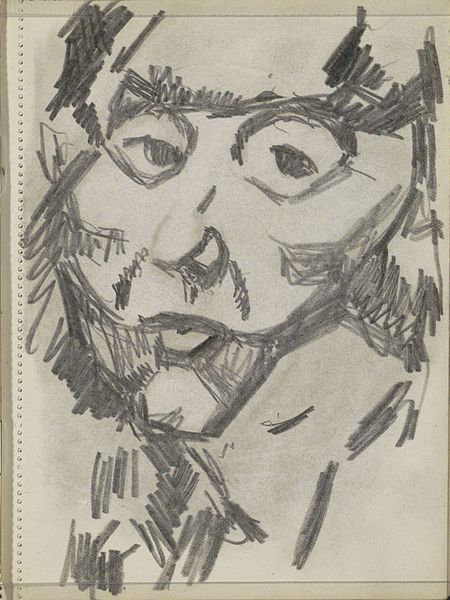
Dimensions: 8 3/16 × 6 1/4 in. (20.8 × 15.88 cm) (sheet)15 × 12 1/8 × 3/4 in. (38.1 × 30.8 × 1.91 cm) (outer frame)
Copyright: No Copyright - United States
Curator: Lovis Corinth’s Self-Portrait, created between 1919 and 1923, is rendered in ink drawing and can be found at the Minneapolis Institute of Art. Editor: It's raw, almost aggressively so. The ink is slapped down in these jagged strokes, and his face… he looks tormented. What’s eating him? Curator: Self-portraits often reveal the artist’s perceived self, or perhaps an aspect of the self they wish to project. Corinth lived through both World Wars and his mental state seems reflected here. Editor: Absolutely. It is expressionism distilled. Notice how the artist utilizes these lines to carve the form. The shadow emphasizes that frown and deepens those unsettling eyes. The paper is filled with energetic markings. Curator: Yes, there is more at work than the visual representation. The very act of creation is a form of symbolic alchemy, as is the material: ink traditionally conveys thoughts, knowledge, and transformation, doesn't it? Editor: And notice the hand holding what appears to be a drawing tool, perhaps another, smaller stylus is lying discarded just beyond it. The formal relationship to the creation tool is the real subject: the means by which inner turmoil achieves visual representation on paper. Curator: It's a compelling dance between the personal and universal, and his choice of rendering himself with such brutal honesty allows us a window into not only his psyche but also the cultural anxieties of his time. Editor: It really holds my gaze. There's a compelling discomfort in confronting this self-portrait that lingers well beyond the initial viewing.
Comments
minneapolisinstituteofart almost 2 years ago
⋮
Lovis Corinth advocated for an aggressive, intensely competitive approach to life, going so far as to offer this advice: “Use all your might to achieve your highest goal. . . . use your greater strength to push your rivals against the wall until they can no longer gasp.” Then, in 1911, Corinth had a stroke and suddenly found his physical powers greatly diminished. After that he made many self-portraits, showing his own frailty with unflinching honesty. When an artist requested a photograph of Corinth, presumably to make a caricature for a satirical magazine, Corinth instead sent him this drawing. Was he sardonically presenting his own features to suggest that nature had already perpetrated the distortions of a caricaturist'
Join the conversation
Join millions of artists and users on Artera today and experience the ultimate creative platform.
